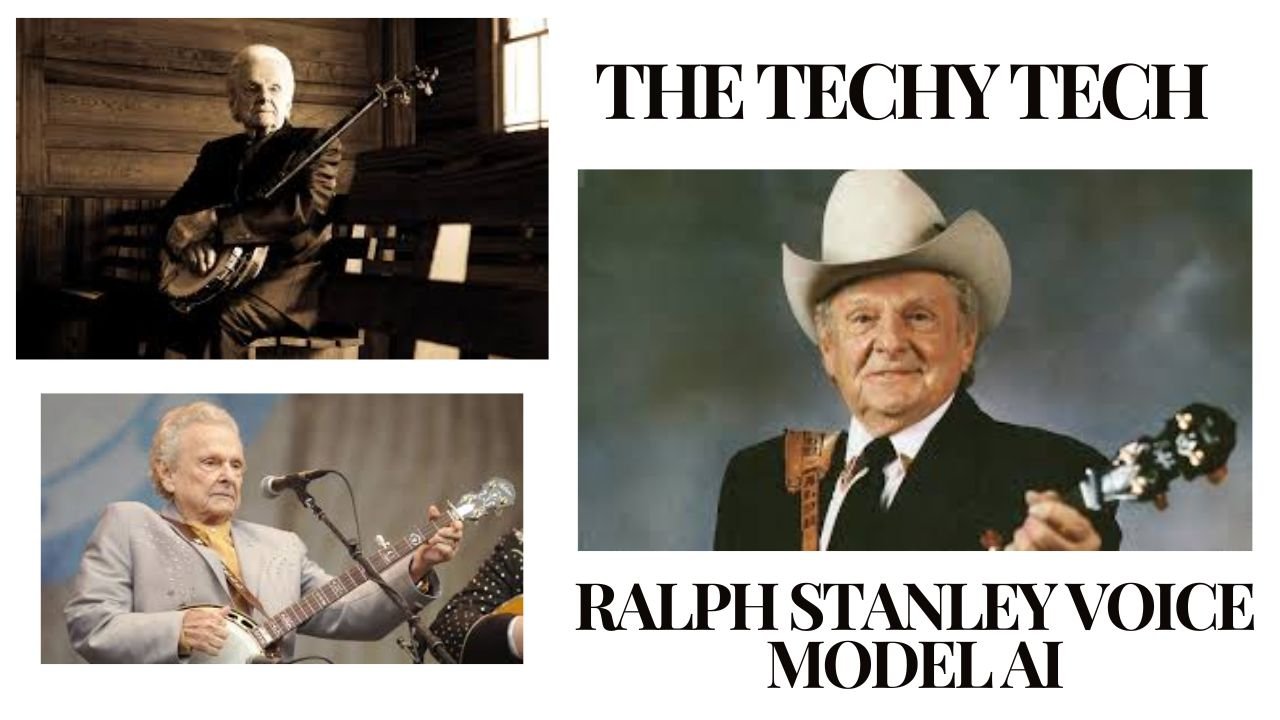Introduction
The Ralph Stanley Voice Model AI is a fascinating development in the intersection of technology and music, designed to preserve and recreate the unique vocal style of the legendary bluegrass musician Ralph Stanley. This AI model, created using advanced machine learning techniques, captures the distinct timbre, pitch, and emotional depth of Stanley’s voice, allowing it to be used in various modern applications.
How the Ralph Stanley Voice Model AI Works
The process of creating this AI model begins with the extensive collection of Ralph Stanley’s audio recordings. These recordings are meticulously processed to remove noise and segment the audio into manageable pieces. The AI then analyzes these segments to extract key features of Stanley’s voice, such as his signature high-pitched, lonesome sound. The model is trained iteratively to fine-tune its accuracy in replicating Stanley’s voice, resulting in a sophisticated text-to-speech system that can generate audio that closely mimics Stanley’s original performances.
Uses for the AI Ralph Stanley Voice Model
This AI model has a wide range of applications.
- Music Production: The Ralph Stanley Voice Model AI can be used to produce new songs in Stanley’s style, offering fans the opportunity to experience new material as if it were sung by Stanley himself. This could be particularly appealing for posthumous tributes or new albums created in his honour.
- Education: Music educators can utilize the AI model to teach students about Ralph Stanley’s techniques and influence in bluegrass music. The AI provides an interactive way to explore and understand the nuances of his vocal style.
- Entertainment: In the world of film and television, the Ralph Stanley Voice Model AI could provide authentic voiceovers for documentaries or biopics, enhancing the storytelling with Stanley’s actual voice.
- Virtual Performances: With the growing popularity of virtual concerts, the AI model could be integrated into live performances, offering fans a unique way to experience Stanley’s music in a modern context.
- Personalized Experiences: Fans might even use AI to create personalized messages or greetings in Stanley’s voice, providing a unique and personal connection to his legacy.
Ethical Considerations
The creation and use of AI-generated voice models raise significant ethical questions. Consent from Ralph Stanley’s estate is crucial to ensure that his voice is used in a manner that respects his legacy. Concerns have also been raised concerning the veracity of articles produced by AI. While the technology can replicate Stanley’s voice with remarkable accuracy, it lacks the human experience and emotion that were integral to his performances.
Moreover, the potential misuse of voice models for deceptive purposes, such as creating unauthorized or misleading content, highlights the need for clear guidelines and regulations. The right to publicity and copyright issues are also paramount, as demonstrated by past legal cases involving the unauthorized use of an artist’s voice.
The Future of AI Voice Models
The future of AI voice models like the Ralph Stanley Voice Model AI is promising but also complex. While some critics argue that these models could undermine music’s authenticity, others see the potential for innovation and creativity. For instance, crowd-sourced collaborations, where artists offer their voices for AI-generated content, could open new avenues for music production.
Ultimately, the success of AI voice models may depend on their ability to balance technological advancement with respect for the original artist’s identity and legacy. As AI continues to evolve, it will be crucial to navigate these developments carefully, ensuring that the technology is used to honour, rather than exploit, the voices it seeks to replicate.
conclusion
the Ralph Stanley Voice Model AI represents a remarkable blend of tradition and innovation, preserving the voice of a bluegrass legend while opening up new possibilities for music and cultural preservation. However, it is essential to approach this technology with ethical considerations in mind, ensuring that its use aligns with the values and legacy of the artists it represents.
FAQ
1. What is the Ralph Stanley Voice Model AI?
An advanced artificial intelligence system called the Ralph Stanley Voice Model AI was created to mimic the distinctive voice style of bluegrass icon Ralph Stanley. It can generate audio that mimics Stanley’s distinctive voice for use in various applications, such as music production, education, and virtual performances.
2. How was the Ralph Stanley Voice Model AI developed?
The model was developed by collecting extensive audio recordings of Ralph Stanley, processing and analyzing the data to capture key features of his voice, such as pitch, tone, and timbre. Advanced machine learning algorithms were then used to train the model to accurately replicate Stanley’s voice.
3. What uses does the AI Ralph Stanley Voice Model have?
Applications include:
Music Production: Creating new songs in Stanley’s style.
Education: Teaching bluegrass singing techniques.
Entertainment: Providing authentic voiceovers for films and documentaries.
Virtual Performances: Enabling live performances with Stanley’s voice.
Personalized Messages: Creating custom greetings or messages in Stanley’s voice.
4. Is the use of Ralph Stanley’s AI voice model ethical?
Ethical use involves obtaining consent from Ralph Stanley’s estate and adhering to copyright laws. Ensuring that the technology is used in a way that respects Stanley’s legacy is crucial. Ethical considerations also include the authenticity of AI-generated content and the potential for misuse.
5. Can the Ralph Stanley Voice Model AI be used in live performances?
Indeed, the AI model may be incorporated into live performances to create dynamic and interactive experiences that include Ralph Stanley’s voice thanks to breakthroughs in real-time speech synthesis.










